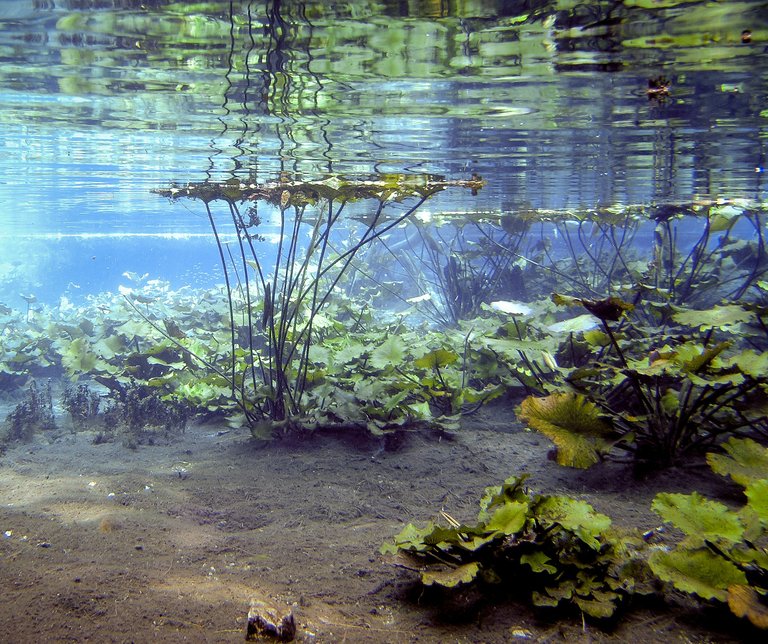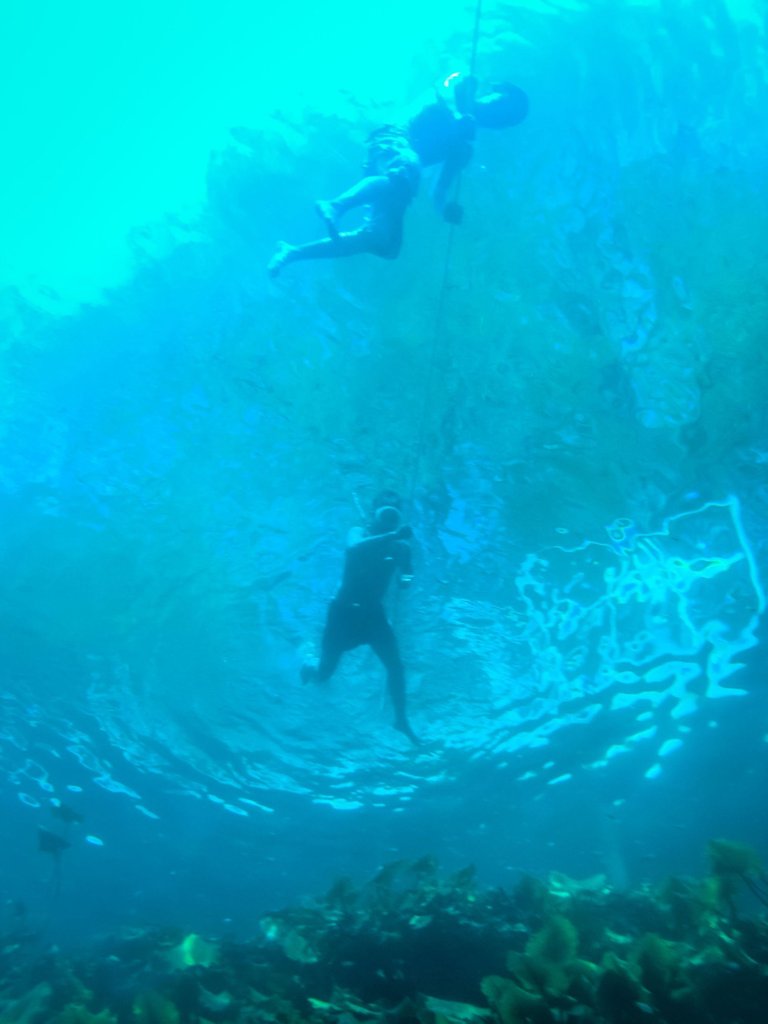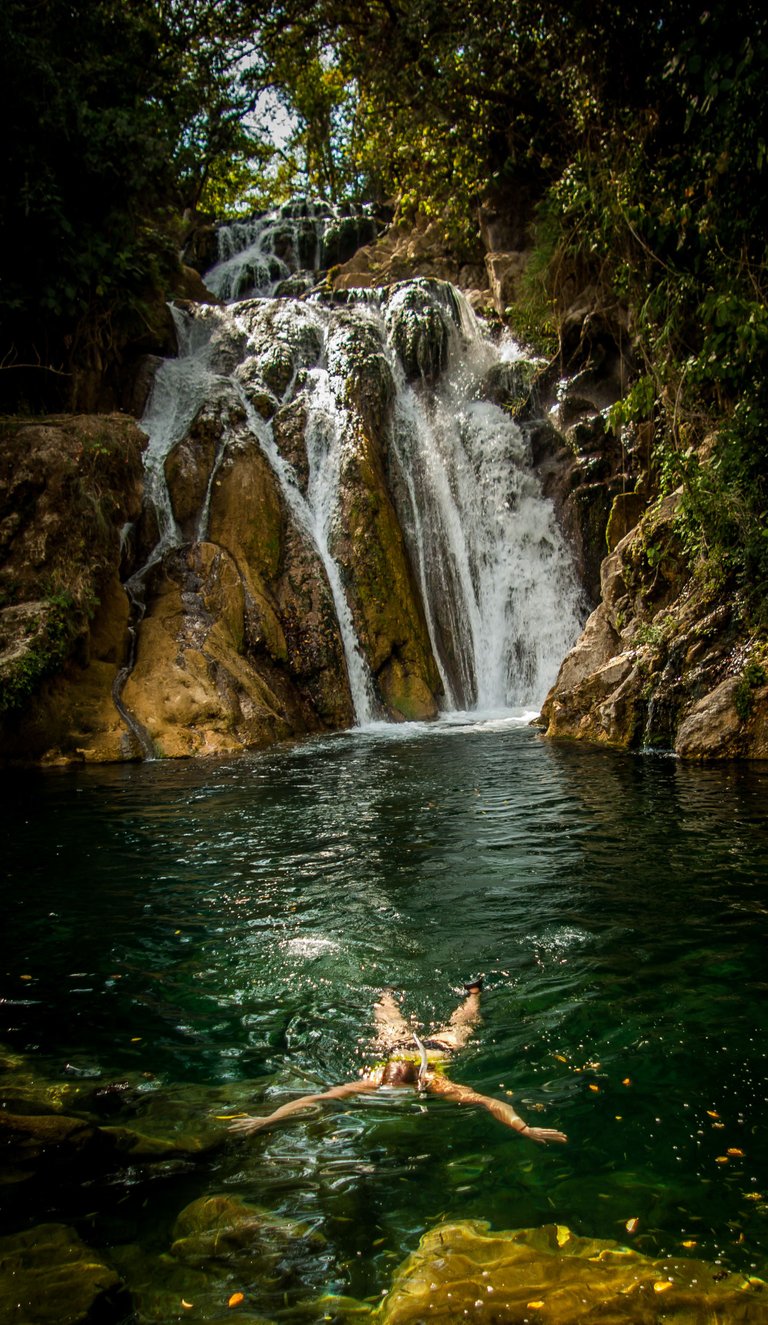Media Luna or Half Moon Lake is located in the Mexican state of San Luis Potosí in the high semi-arid plateau of the Sierra Madre Oriental Mountains at an altitude of 982 m (3,222 ft). The lake’s warm water 28-32° C (85-88° F) and great visibility 20-30 m (60-100 ft) makes it a perfect place to further your dive training, gain more diving experience, or just to add a new experience to your dive log. And, because of its protected status as a national preserve, the thriving wetlands contain considerable biological diversity for the photographer and naturalist alike.
The lake is fed by five different thermal springs with a flow rate of 4.35 m3/ second. The flow is so constant that the warm clear water is used for irrigation for over 5,000 hectares of farmland. As mentioned, these thermal vents give Media Luna a constant warm temperature, but because of the lake’s arid location, you can quickly chill upon surfacing with the slightest of breeze.
There is a well-maintained boardwalk that leads to the lake from the parking lot and at the end of the boardwalk is a large dock that can be used by divers for entries and exits. There are also several large picnic tables with grills where you can store belongings, prepare lunch or just relax between dives. The lake itself is of a moderate size with a maximum diameter of no more than 100 m (330 ft) or 25 hectares and an average depth of 9-12 m (30-40 ft) and a maximum depth of 34 m (110 feet). The deepest portion of the lake is in the center but that depth is not maintained throughout. Please remember, because it is spring water, the mineral content is higher than most freshwater sites which will increase your buoyancy so make sure and bring extra weight.

Diving
Two areas of interest underwater are the bog cave and the petrified trees. The cave is only 2-4 m (6-12 ft) deep but beautiful nonetheless. The cavern’s opening is disguised slightly by a fine dust of silt making it difficult to see. Once you get past the initial haze however, you will make out the cave’s opening and can continue back roughly 180 m (600 ft). The most stunning features of the cave are the shafts of light penetrating through cenote-style openings in the cave’s natural cover. This cover is made up of thick vegetation that gives the cavern its boggy texture. The openings provide light most of the way through but there is no light in the back of the cave so dive lights are needed. These shafts of light and their ghostly illumination make for striking, yet eerie photographs so bring your camera. To the left of the cave as you exit, there are 2 channels leading to the front of the lake. These channels are only .5-1.5 m (2-4 ft) deep but offer photographers a plethora of backdrops with adequate light for magnificent photographs. Be careful though, because of it shallow depths you might see one or two legs popping into your frame so be patient.
The other interesting feature below water is the petrified trees along the west side of the lake. Most are merely tree trunks but they are massive in scale. It appears they once lined the banks of the lake but either fell or where forced into the water over time. These remains are now hard as rocks and smooth to the touch. There are 10 in all and provide for some superb abstract landscapes.

There is an abundance of vegetation throughout the lake and many small fish. The vegetation is interesting because it abruptly ends at a depth of 9-12 m (30-40 ft). Beyond that limit there is only sand and sediment which require divers to practice good buoyancy techniques to not reduce visibility. If the sediment gets stirred up, the visibility will become cloudy and requires 20 - 30 minutes to clears up. The underwater vegetation in the shallower waters consists mainly of beds of water lilies. It's a mesmerizing experience to watch as tiny gases bubbles stream upwards to the surface from these underwater fields.
Diving the Waterfall
About an hour and a half from Media Luna is Puente de Dios or ‘Bridge to God.’ This river and connected waterfall is another local swim area but can also be a dive site for those who are certified. Once you park, you will need to walk about 400 m (¼ mile) to get to the dive site with all your gear. This may not seem far but it is a steep descent and more importantly a steep ascent on the way back up after your dive. There are porters that will carry your gear for tips so make sure and bring some pesos if you plan to use their services. The usual fee is 50 pesos ($5.00 US) and well worth every penny. Even not carrying your gear the hike up can be tough so make sure and remove your wetsuit before starting the hike.

The dive area is fairly shallow 9 m (30 ft) but very clear. Because it is a river there is a stiff current on the surface so get below quickly. Also, make sure as you dive that you scour the river’s bottom. As mentioned, this is a local swimming hole and you might be presently surprised at what you find fallen from the pockets of careless swimmers.
The region of San Luis Potosí is absolutely beautiful. Media Luna and Puente de Dios are just 2 of many experiences you can have so make sure and stay a few days at least but longer is definitely better.
All Content and Photography is Original.
Enjoying my content? Please help support my efforts by resteeming.
Thanks So Much - Liquidtravel